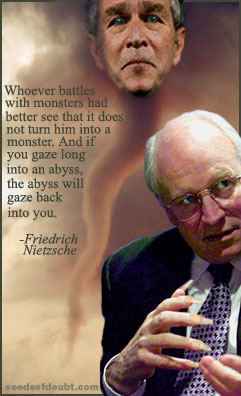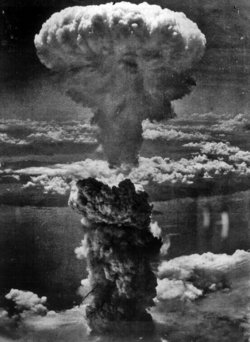Jan. 30, 2006 issue - The demonstration seemed harmless enough. Late on a June afternoon in 2004, a motley group of about 10 peace activists showed up outside the Houston headquarters of Halliburton, the giant military contractor once headed by Vice President Dick Cheney. They were there to protest the corporation's supposed "war profiteering." The demonstrators wore papier-mache masks and handed out free peanut-butter-and-jelly sandwiches to Halliburton employees as they left work. The idea, according to organizer Scott Parkin, was to call attention to allegations that the company was overcharging on a food contract for troops in Iraq. "It was tongue-in-street political theater," Parkin says.
A Defense document shows that Army analysts wrote a report on the Halliburton protest and stored it in CIFA's database. It's not clear why the Pentagon considered the protest worthy of attention—although organizer Parkin had previously been arrested while demonstrating at ExxonMobil headquarters (the charges were dropped). But there are now questions about whether CIFA exceeded its authority and conducted unauthorized spying on innocent people and organizations. A Pentagon memo obtained by NEWSWEEK shows that the deputy Defense secretary now acknowledges that some TALON reports may have contained information on U.S. citizens and groups that never should have been retained. The number of reports with names of U.S. persons could be in the thousands, says a senior Pentagon official who asked not be named because of the sensitivity of the subject.
CIFA's activities are the latest in a series of disclosures about secret government programs that spy on Americans in the name of national security. In December, the ACLU obtained documents showing the FBI had investigated several activist groups, including People for the Ethical Treatment of Animals and Greenpeace, supposedly in an effort to discover possible ecoterror connections. At the same time, the White House has spent weeks in damage-control mode, defending the controversial program that allowed the National Security Agency to monitor the telephone conversations of U.S. persons suspected of terror links, without obtaining warrants.
Last Thursday, Cheney called the program "vital" to the country's defense against Al Qaeda. "Either we are serious about fighting this war on terror or not," he said in a speech to the Manhattan Institute, a conservative think tank. But as the new information about CIFA shows, the scope of the U.S. government's spying on Americans may be far more extensive than the public realizes.
It isn't clear how many groups and individuals were snagged by CIFA's dragnet. Details about the program, including its size and budget, are classified. In December, NBC News obtained a 400-page compilation of reports that detailed a portion of TALON's surveillance efforts. It showed the unit had collected information on nearly four dozen antiwar meetings or protests, including one at a Quaker meetinghouse in Lake Worth, Fla., and a Students Against War demonstration at a military recruiting fair at the University of California, Santa Cruz. A Pentagon spokesman declined to say why a private company like Halliburton would be deserving of CIFA's protection. But in the past, Defense Department officials have said that the "force protection" mission includes military contractors since soldiers and Defense employees work closely with them and therefore could be in danger.







No comments:
Post a Comment